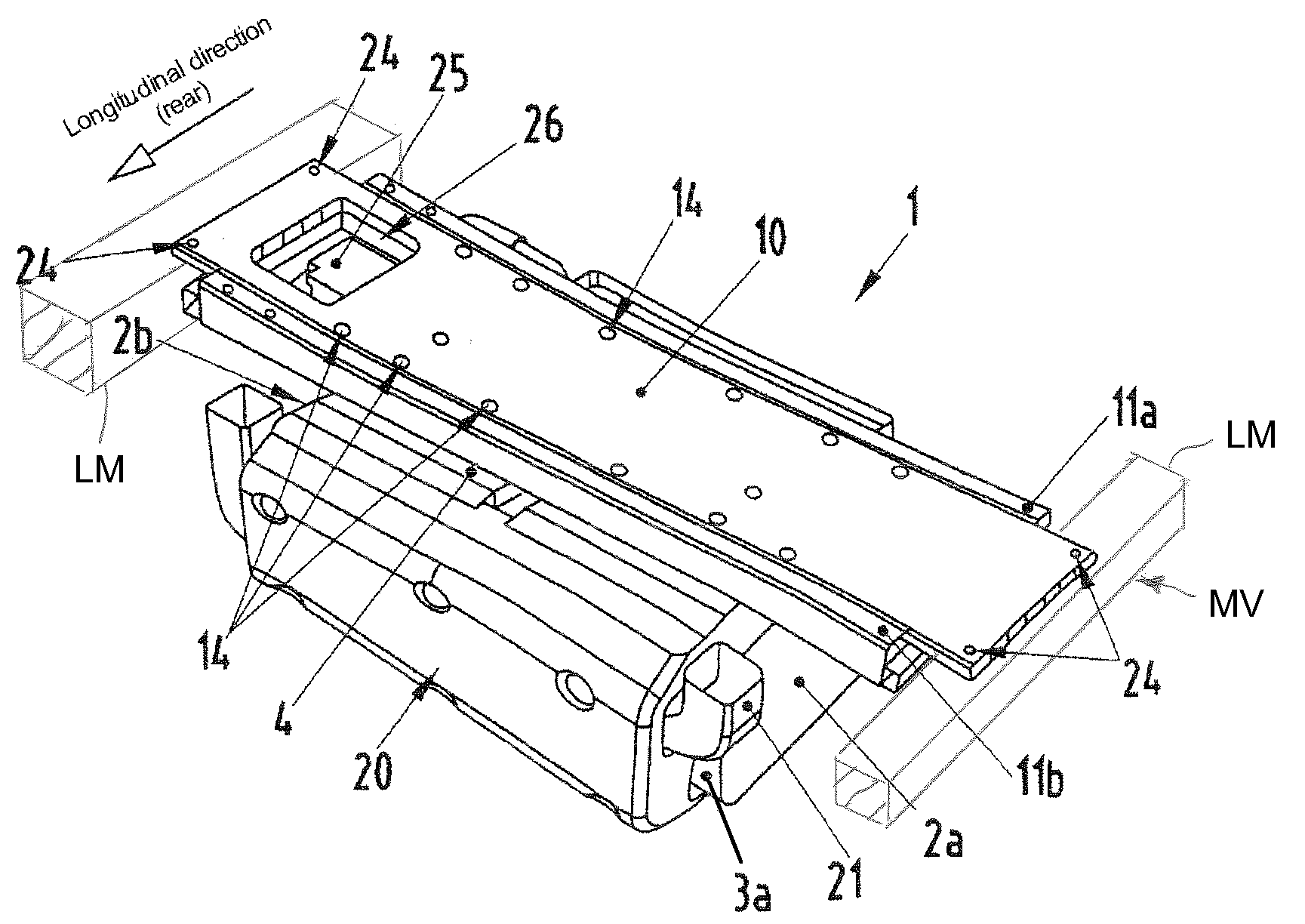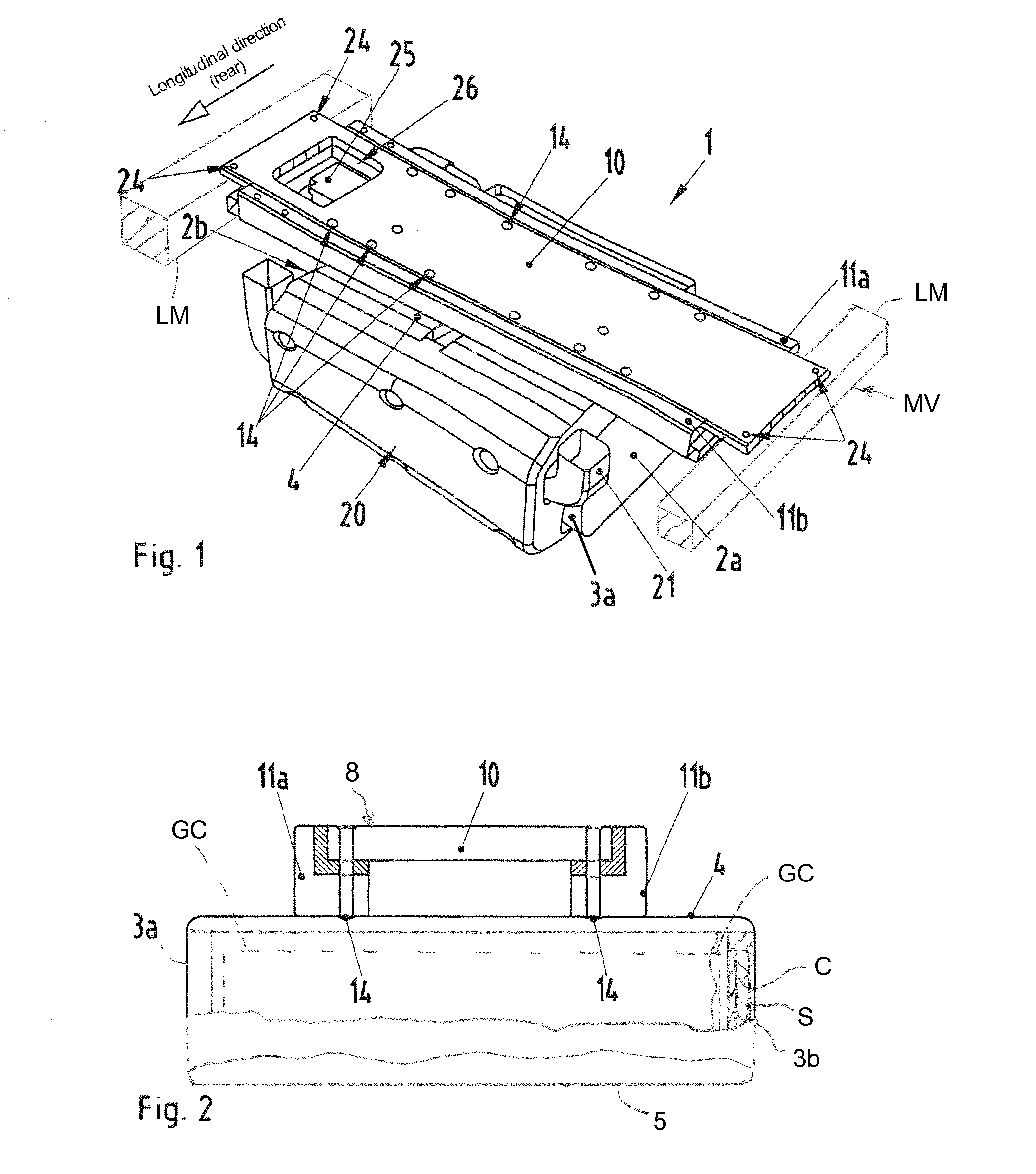Protective housing for a galvanic cell in a motor vehicle
a protection housing and motor vehicle technology, applied in the direction of cell components, electric devices, cell component details, etc., can solve problems such as damage to adjacent elements
- Summary
- Abstract
- Description
- Claims
- Application Information
AI Technical Summary
Benefits of technology
Problems solved by technology
Method used
Image
Examples
Embodiment Construction
[0027]A protective housing for a galvanic cell GC of a motor vehicle MV is identified generally by the numeral 1 in FIG. 1. The protective housing 1 has two substantially planar longitudinal walls 2a, 2b that extend in the longitudinal direction of the motor vehicle MV. In addition, the protective housing 1 has a rear transverse wall 3a and a front transverse wall 3b, as shown in FIG. 2. The transverse walls 3a, 3b extend transverse to the longitudinal direction of the motor vehicle. The protective housing 1 also has a cover 4 and a base 5 opposed to the cover 4. The side walls 2a, 2b, 3a, 3b, the cover 4 and the base 5 are elements of an enclosed receptacle space for accommodating the galvanic cell. These elements are fabricated as individual parts in the form of aluminum extruded sections and then sections and then are combined to form the receptacle space. Depending on requirements, these elements may form chambers C in at least certain areas. The chambers C may be reinforced as ...
PUM
| Property | Measurement | Unit |
|---|---|---|
| surface area | aaaaa | aaaaa |
| electrically | aaaaa | aaaaa |
| forces | aaaaa | aaaaa |
Abstract
Description
Claims
Application Information
 Login to View More
Login to View More - R&D
- Intellectual Property
- Life Sciences
- Materials
- Tech Scout
- Unparalleled Data Quality
- Higher Quality Content
- 60% Fewer Hallucinations
Browse by: Latest US Patents, China's latest patents, Technical Efficacy Thesaurus, Application Domain, Technology Topic, Popular Technical Reports.
© 2025 PatSnap. All rights reserved.Legal|Privacy policy|Modern Slavery Act Transparency Statement|Sitemap|About US| Contact US: help@patsnap.com


